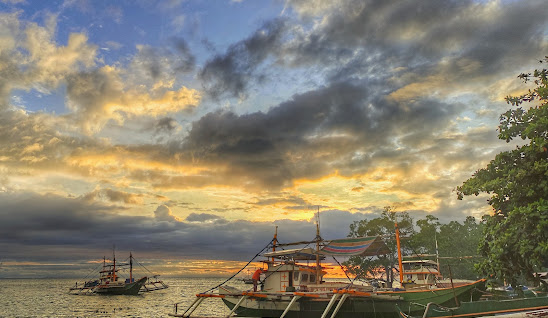Located in the captivating region of the Zamboanga Peninsula in the Philippines, the municipality of Aurora stands as a hidden gem, waiting to be explored by travelers seeking a blend of rich history, breathtaking landscapes, and warm community spirit. Named after the esteemed First Lady of the Philippines, Aurora Quezon, the town embraces her legacy by fostering a nurturing environment for its residents and visitors alike.
A Glimpse into Aurora's History:
Founded on August 22, 1942, Aurora boasts a history that intertwines with the Philippines' journey to independence. As part of the 1st district of Zamboanga del Sur, this municipality covers an area of approximately 180.95 square kilometers, providing ample opportunities for adventure and cultural exploration.
Nature's Abundance:
Aurora is blessed with diverse topography, offering a plethora of natural wonders to be admired. From the gentle lowlands to the majestic peaks reaching an elevation of 501 meters, the landscapes present an enchanting canvas for nature enthusiasts and explorers.
Economic Landscape:
Aurora holds the classification of a 2nd municipal income class, signifying the progress and economic growth the town has achieved over the years. The steady revenue and assets demonstrate the dedication of its people to uplift their standard of living.
Aurora is home to 44 vibrant barangays, each with its own distinct character and cultural heritage. The welcoming locals embrace visitors, providing a genuine glimpse into their way of life and traditions.
Embracing Diversity:
With a population of 52,995 as of the 2020 census, Aurora celebrates its diverse community, representing different native languages such as Subanon, Cebuano, Chavacano, and Tagalog. This linguistic tapestry highlights the rich cultural heritage of the region.
Festivals and Celebrations:
Aurora comes alive with vibrant festivals and celebrations that showcase the town's lively spirit. These events honor traditions, pay homage to historical milestones, and foster camaraderie among the locals and visitors.
Preserving Cultural Treasures:
While exploring the wonders of Aurora, it is vital to preserve the town's cultural and environmental treasures. Responsible tourism practices ensure the conservation of its beauty and the sustainability of its resources for future generations to enjoy.
What sets Aurora apart is the warmth and friendliness of its people. The genuine hospitality and sense of community create an inviting atmosphere that welcomes travelers with open arms.
Experience the Allure of Aurora:
Whether seeking an adventure in nature's embrace, a cultural immersion, or a tranquil retreat, Aurora beckons all to explore its enchanting charm. From its historical roots to its captivating landscapes, the municipality of Aurora offers an unforgettable experience that leaves a lasting impression in the hearts of all who visit.
Aurora, Zamboanga Del Sur, offers a myriad of delightful experiences for travelers seeking a memorable adventure. From captivating landscapes to mouthwatering culinary delights, this charming municipality has something for everyone. Here are some exciting things to do and places to visit in Aurora:
- Tabuan sa Aurora: Explore the vibrant local market, Tabuan sa Aurora, where you can immerse yourself in the town's culture and discover a variety of local products, handicrafts, and fresh produce.
- Lintugop Balas River Cruise: Embark on a relaxing river cruise along the Lintugop Balas River, surrounded by lush greenery and captivating views. It's a serene and peaceful experience that allows you to connect with nature.
- Shrimp and Crabs: Savor the delectable flavors of fresh and affordable shrimp and crabs, which are abundant in the region. Indulge in a seafood feast and experience the taste of the ocean.
- Municipal Playground: For families and kids, the Municipal Playground offers a fun and enjoyable place to play, unwind, and spend quality time together.
- Lagrings Chicken Barbeque: Treat your taste buds to the mouthwatering goodness of Lagrings Chicken Barbeque, a local favorite known for its succulent and flavorful grilled chicken.
- Roadsie Kambingan: For a taste of local cuisine, head to Roadsie Kambingan and try their specialty dishes featuring succulent goat meat prepared in various delicious ways.
- Nunezas Hilltop and Panoramic Views: Hike up to Nunezas Hilltop and be rewarded with breathtaking panoramic views of the surrounding landscapes. It's an ideal spot for nature lovers and photography enthusiasts.
- VS Wonderland: For an adrenaline rush, visit VS Wonderland, an amusement park that offers thrilling rides and entertainment for the whole family.
- Aurora at Night: Experience the enchanting beauty of Aurora at night, where you can stargaze and appreciate the tranquility of the surroundings.
- Aurora Mountain Resorts: Unwind and relax at one of Aurora's mountain resorts, where you can bask in nature's embrace and enjoy a serene escape from the hustle and bustle of city life.
- Galatea and Coffee: End your day with a visit to Galatea and Coffee, a cozy spot where you can savor aromatic coffee and indulge in delightful desserts.
Aurora, Zamboanga Del Sur, is a destination that captivates with its natural beauty, warm hospitality, and diverse offerings. Whether you're seeking adventure, culinary delights, or peaceful relaxation, this charming municipality promises a memorable experience that will stay with you long after your visit.
Getting to Aurora:
Travelers can reach Aurora by flying into nearby airports such as Zamboanga or Dipolog and then embarking on a scenic road trip to the town.
Aurora, Zamboanga Del Sur, invites travelers to discover its hidden treasures and immerse themselves in its rich cultural heritage. Embrace the allure of Aurora and embark on a journey that celebrates nature, history, and the warmth of its community, leaving you with cherished memories of a remarkable escapade.

